In veterinary practice, registered veterinary nurses (RVNs) and veterinary nursing students are involved in the nursing of patients requiring urinary catheterisation, and the management of patients with indwelling urinary catheters (IDUC). As discussed by Branscombe (2012), invasive procedures such as urinary catheterisation are tasks that trained professionals such as RVNs are allowed to perform, and their placement and management are tasks which should not be delegated to untrained lay people. Sedor and Mullholland (1999) stated that approximately 30 to 40% of all nosocomial infections documented in humans are UTIs that develop post catheterisation, and approximately 15% of blood stream infections in human patients are a consequence of a urinary tract infection (UTI) (Maki and Tambayh, 2001; Leone et al, 2003). Ogeer-Gyles et al (2006) highlighted that the frequency and justification of urinary bladder catheterisation in veterinary patients is similar to humans, so RVNs must be aware of the likelihood of nosocomial infection development, now termed hospital-acquired infections (HAIs). Being aware of the risk factors for the development of catheter-associated urinary tract infections (CAUTIs) will enable the RVN to improve their management of such cases. This includes a better knowledge regarding the development of UTIs, or bacteriuria, and the equipment and consumables available to reduce the incidence of infection, such as closed-collection drainage systems (CCDS).
Indications for catheterisation
Sedor and Mullholland (1999) explained that approximately 25% of human patients in an intensive care unit (ICU) have an IDUC placed in order to improve nursing care. They are thought to prevent urine scalding, prevent the development of skin infections, facilitate bladder emptying in cases of neurological bladder dysfunction, to irrigate the bladder and to measure urine output. Lulich (2001) contemplated that IDUCs are often essential to use in veterinary patients with urinary tract disorders, which is unfortunate as these patients are generally at a greater risk of developing UTIs. Dunning and Stonehewer (2002) added to this by stating that IDUCs are a common source of infection and are frequently used in cats to manage lower urinary tract obstructions; urethral blockage is common in cats, especially Tom cats (Gunn-Moore 2008). Davis (2005a) stated that IDUCs are not required in cases of acute renal failure, however felt they could greatly facilitate the care of these patients as the RVN is able to quantify urine production, which assists in the assessment of patient fluid needs. Oosthuizen (2011) concisely outlined the main indications for urinary bladder catheterisation in veterinary patients, which included obtaining an uncontaminated urine sample, emptying bladder prior to surgery, introducing drugs and contrast media, managing bladder drainage post surgery or in recumbent patients, maintaining a patent urethra post blockage, monitoring and treating UTIs, maintaining drainage in cases of retention or nervous damage, and to prevent urine leakage and contamination in surgery. Only some of these indications would require the placement of an IDUC, namely the latter six.
Bacteriuria and UTI development
Maki and Tambayh (2001) outlined that urinary bladder catheterisation in humans allows a portal of entry for bacteria from the environment, and potentially from the patient's intestinal and colonic flora. They further explained that ascending bacterial UTIs are caused by perineal and periurethral bacteria either migrating up the lumen of the catheter, or migrating extra-luminally along the outside of the catheter to the bladder. This is definitely a way in which bacteria could be introduced in veterinary patients as, in the author's experience and dependent on the individual veterinary surgeon's preference, some patients do not routinely have their perineum clipped and cleaned prior to catheter insertion. In dogs and cats, multiple urinary catheterisations and the use of IDUCs predispose the patient to bacterial colonisation of the lower urinary tract (Smarick et al, 2004; Bevan, 2010; Westropp, 2011). Ogeer-Gyles et al (2006) expanded on Maki and Tambayh's (2001) finding, stating that intra-luminal contamination of the catheter and subsequently the bladder could be caused by reflux of contaminated urine from the collection bag, or via a break in a closed-collection drainage system. Iatrogenic infections are commonly seen following urinary bladder catheterisation, and inappropriately inserted catheters can also damage the urinary mucosa, predisposing the patient to secondary inflammation Reina (2011). Potential origins of UTIs in veterinary patients include bacteria being carried up the urethra during catheter placement, IDUCs, repeated catheterisation, poor management of IDUCs and inability to effectively launch an immune response, such as in immunosupressed patients, amongst others (Oosthuizen, 2011).
Ogeer-Gyles et al (2006) explained that the development of CAUTIs concerns the establishment of a bio film at the tip of the urinary catheter, which allows a community of resistant bacteria to persist. Gaschen (2008) further elaborated this point in relation to IDUCs and other invasive implants, detailing that a biofilm is a layer of microorganisms that produce a matrix that allows them to easily adhere to the surface of the device. This biofilm is essential in the pathogenesis of catheter-associated HAIs, specifically CAUTIs in veterinary practice, as the biofilm facilitates bacterial colonisation of the bladder. This biofilm means that the concurrent use of antibiotics in patients with IDUCs will predispose them to infection with resistant microorganisms (Hotston Moore, 1995); Gunn-Moore (2008) also advised to avoid using antibiotics while the IDUC is in situ as this risks selecting for resistant bacterial clones, and she suggested starting antibiotics once an IDUC has been removed, if indicated, having cultured the tip of the catheter.
There is a little discrepancy in available data regarding what defines bacteriuria. Leone et al (2003) specified that, on culture of a urine sample, a figure ≥ 105 colony-forming units (CFU) per millilitre (ml) with no more than two different species of organisms provides a diagnosis of bacteriuria. Ogeer-Gyles et al (2006) suggested that a clinical relevant bacteriuria, indicative of UTI, can be diagnosed when a culture yields a result >103–104 CFU/ml. In a recent review of literature, Lopez and Cortes (2012) defined a cut-off value of 105 CFU/ ml with fewer than two species of microorganisms in a patient with no urinary catheter in situ, and in a patient with a catheter where the sample has been collected aseptically, a cut-off value of 103 CFU/ml.
Lopez and Cortes (2012) reported that 20 to 50% of HAIs in ICUs are UTIs, and stated that one important factor in trying to reduce this incidence is the use of CCDS with IDUCs, and keeping them closed. They discussed that during the 1990s the use of CCDS significantly increased in human medicine, and consequently they recorded a 50% decrease in the incidence of UTIs in patients. Thus, CCDS are definitely something veterinary professionals should be utilising more frequently, extrapolating from findings in human literature to create evidence-based protocols.
Definition of open versus closed drainage
There is some debate in veterinary literature regarding what exactly an open-collection drainage system (OCDS) is in comparison to a closed-collection drainage system (CCDS), whereas in human literature the distinction between the two is a little clearer. From the author's experience, in veterinary practice, professionals widely consider an OCDS to be one where the urinary catheter is open to the environment and allowed to freely drain onto an incontinence pad (Figure 1). Lulich (2001) identified with this description of an OCDS, stating that iatrogenic infections are most risky when using an open system in animals, where the portion of the urinary catheter that protrudes from the urethra is not connected to a urine collection receptacle. A CCDS is believed to be a urinary catheter with a collection bag attached as a receptacle for urine collection. The only example found in human literature that relates to the general veterinary idea of open drainage mentioned above was in a study conducted by Montagnino et al (1988), where 50 patients had an IDUC placed and traditional CCDS attached, and the other 50 had an IDUC placed that drained straight into double diapers. No other human studies located, comparing OCDS and CCDS in relation to the development of bacteriuria and UTIs, described the IDUC as being open to the environment. The concept and definition of an OCDS and CCDS shall be considered further here, before examining the literature supporting the use of CCDS as gold standard.
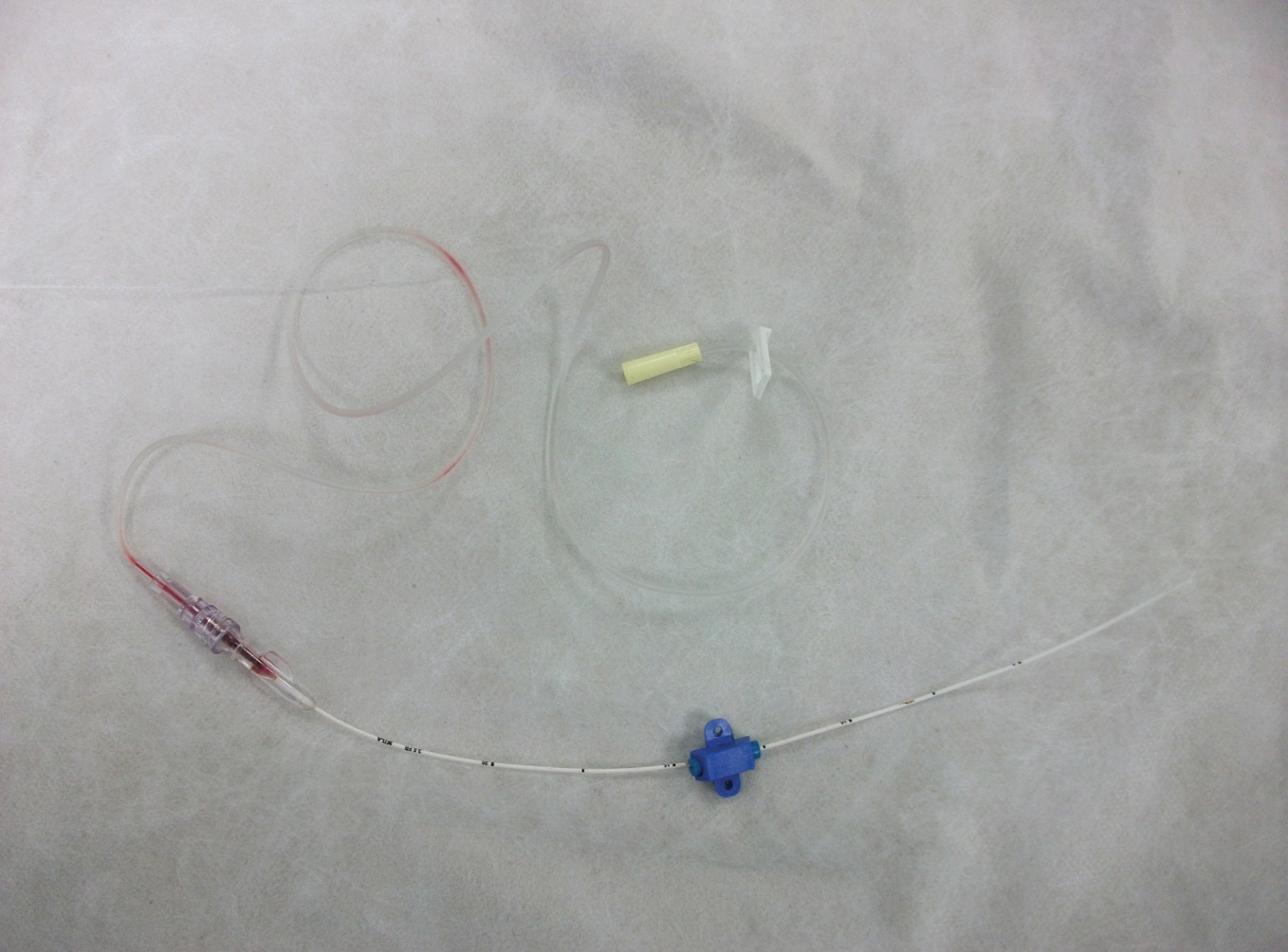
According to Leone et al (2003), historically OCDSs were large, uncapped glass bottles into which the urinary catheter was inserted. The catheter used to sit below the level of the urine collecting in the bottle, which would stagnate and thus allow easy ascension of bacteria along the catheter to the bladder resulting in a UTI. Leone et al (2003) added that modern OCDSs are more sophisticated in that they contain anti-reflux devices to prevent the bacteria ascending back up to the catheter, for example a Foley catheter that is connected to an output measure recipient first, and then a urine collection bag. Oosthuizen (2011), when discussing IDUC management in veterinary patients, initially suggested that an OCDS involves connecting the patient's IDUC to a sterile reservoir bag that is a distance from the patient; this means that the lire does not need to be disconnected in order to collect urine from the reservoir bag, thus decreasing the chance of bacteriuria.
Gould and Brooker (2008) explained that CCDS were introduced in human medicine in 1928, but the profession did not appreciate the significance of their role in the prevention of UTIs until the 1960s, when studies revealed that CCDS could reduce the incidence of sepsis from 80% to 10%. Gould and Brooker (2008) discussed the fact that ‘closed’ drainage is not actually an accurate term for any urine collection system; there are numerous portals of entry for pathogens as the system must be opened up to allow drainage of collected urine, to facilitate the collection of samples and to change the collection bags. This point had been highlighted many years earlier by Blenkharn (1985), who stated that CCDS are never truly closed in the microbiological sense; there will always be the need to break the integrity of the closed system to collect samples, and drain and measure the volume collected. Blenkharn (1985) mentioned a complex closed system, described as one which had non-reusable collection bags and one-way anti-reflux valves. Wille et al (1993) also differentiated between simple closed systems and complex closed systems, with the former simply being an IDUC, an anti-reflux valve and a collection bag, and the latter being a lot more complex; specifically a preconnected coated IDUC, a tamper discouraging seal at the catheter-drainage tubing junction, a drip chamber, an anti-reflux valve, a hydrophobic drainage bag vent and a povidone-iodine releasing cartridge in line with the outlet tube of the urine collection bag. This description of the complex closed system was shared later by Leone et al (2003).
Following Oosthuizen's (2011) description of an OCDS above, she described a CCDS simply as being one where the IDUC is not open to the outside air by virtue of the placement of a sterile bung or by connection to a collection bag, the latter of which was her initial definition of an OCDS. In her article, she stated that her explanation of both OCDS and CCDS should be deemed ‘closed, as neither allow the IDUC to be open to the environment, however she believed that ‘closed’ or bunged systems would increase the risk of CAUTI development in patients as the bung is periodically removed for drainage purposes, which she supported with a reference by Sullivan et al (2010).
Much of the literature refers to OCDS as an IDUC which is attached to collection tubing and ultimately a collection bag, which as discussed are also referred to as simple CCDS. The author recommends the veterinary profession use the term simple CCDS in the future for the way urine collection systems are used in veterinary patients as complex CCDSs, as described in the literature, are not routinely used in veterinary practice. To reiterate, veterinary professionals must always be mindful that any collection system will never truly be closed in the microbiological sense; they all have to be opened or exposed to the environment at some stage.
Research studies
There is a consensus in existing veterinary literature about the use of CCDS in all patients with IDUCs in situ. Hotston Moore (1995) stated that CCDS should reduce the risk of CAUTI development, a statement supported by Davis (2005a, 2005b) who added that the maintenance of these CCDSs is imperative to the prevention of CAUTIs. Bevan (2010) also supported this notion that all invasive devices should be closed systems, including urinary catheters, and when Lopez and Cortes (2012) were discussing the statistics of CAUTIs they also stipulated that urinary drainage systems must remain closed.
As previously mentioned, the frequency and justification for the use of IDUC is thought to be similar in veterinary patients as in human patients (Ogeer-Gyles et al, 2006), so extrapolating from reported human incidence rates of CAUTIs, it is safe to say veterinary patients are likely to suffer similar CAUTI incidences. This may even be to a greater degree due to the widespread use of truly ‘open’ drainage systems in veterinary practice; that is an IDUC being open to the environment all of the time and the urine draining onto an incontinence sheet. It is therefore also clear that veterinary professionals must ensure they utilise CCDSs in all patients with IDUCs in situ. With this is mind, the next question is whether veterinary professionals should be contemplating the use of ‘complex’ CCDSs, or whether the more commonly used and readily available ‘simple’ CCDSs will suffice in the fight against CAUTIs.
An early human study conducted by Blenkharn (1985) split 1088 patients into two groups; the first group of 512 patients had a conventional, simple CCDS connected to their IDUCs, and the second group of 576 patients had a closed CCDS connected. The study revealed that both groups of patients developed a CAUTI, but there was not a statistically significant difference between group one and group two patients, with infection rates being 26.8% and 12.2%, respectively. An animal study in the same year, conducted by Barsanti et al (1985) studied just one group of 21 non-bacteriuric patients with an IDUC in situ, which was connected to a simple CCDS. They found that 11 of the 21 patients developed a positive urine culture after an average of 4 days (range 1-10 days). This study only serves to prove that a proportion of veterinary patients will inevitably develop a CAUTI even when a CCDS is used. Another finding from this study was that the bacteria cultured became progressively more antibiotic resistant over 12 days of the study. Bartsch et al (2008) came to a similar conclusion in their study of 148 patients, all of whom has an IDUC placed and attached to a CCDS; 32.4% of their study population developed a CAUTI, so it is clear that CAUTIs are definitely linked to both intra-luminal and extra-luminal ascension of bacteria, as well as poor IDUC placement techniques in this study.
Revisiting a study mentioned earlier, the only human reference to true open urinary drainage was a study conducted by Montagnino et al (1988); 50 patients had their IDUC connected to a CCDS, and the other 50 patients had their IDUC draining into double diapers they were wearing. In this study, 24% of the patients in both groups developed a CAUTI, and they concluded that open drainage into a diaper was safe and effective for short-term catheter management. Veterinary professionals reading this must be mindful that it would be hard to keep a nappy on a cat or dog for this purpose, and veterinary patients have considerably more perineal and periurethral hair than human children, so there is a greater likelihood of bacteria from these sources ascending the IDUC to the bladder.
Another human study conducted by Wille et al (1993) studied the onset and incidence of nosocomial bacteriuria between a simple CCDS and a complex CCDS. They found that both groups of patients developed a CAUTI and there was no difference in the onset and incidence of bacteriuria between the two groups. They concluded that the additional complex features of a complex CCDS therefore did not serve to reduce the risk of CAUTI, and a simple CCDS worked just as well. These findings were supported in a later study by Leone et al (2003), which split 224 human patients into two groups; one group had a simple CCDS and the other group a complex CCDS attached to their IDUCs. Again, both groups did develop CAUTIs, but no statistically significant difference was established between the CCDSs; 11.5% of the simple CCDS group developed an infection, whereas 13.5% of the complex CCDS group developed one. In their discussion, they postulated that the key risk factors associated with CAUTI development (when a CCDS was already being utilised) were Escherichia coli (gastrointestinal contamination), the duration of catheterisation, the length of stay in ICU and gender (women developed more CAUTIs than men).
Sullivan et al (2010) performed a randomised control trial using 51 dogs that required catheterising for ≤24 hours. They split the dogs into two experimental groups; the first had their IDUC connected to an ‘open’ urinary collection system, which they stated was a sterile intravenous (IV) fluid bag, so this relates to the author's description of a simple CCDS. The second group had their IDUC connected to a ‘closed’ urinary collection system, so this is assumed to be a complex CCDS as previously described in human literature. They found that 11.1% of the ‘open’ collection group developed a CAUTI, compared with 8.3% of the ‘closed’ collection group. Therefore there was no statistically significant difference between the two groups, and they attributed their low CAUTI development rates in this study to the strict protocol they followed for the placement and management of the IDUCs and collection systems.
It is clear from these human and veterinary studies, which have spanned over two decades, that there is no statistically significant difference in the development of CAUTIs between simple CCDSs and complex CCDSs. Therefore it is sensible to recommend using what is already available in veterinary practice to establish a simple CCDS for all patients with an IDUC, as recommended in human literature (Lopez and Cortes, 2012). Collection bags are commercially available for the collection of urine from Foley IDUCs placed in canines (Figures 2a, b, c), and sterile intravenous (IV) fluid bags with a new sterile giving set attached is a useful and effective way to create a simple CCDS in feline patients with IDUCs (Figures 3a, b, c, d). Barrett and Campbell (2008) recognised that IV fluid bags were being used by some veterinary professionals as part of their simple CCDSs, and questioned the appropriateness of this in relation to their sterility and potential contribution to the problem of ascending bacteria. Therefore they cultured 95 such IV fluid bags to determine whether they could be a potential source of bacterial contamination and found no growth of aerobic bacteria in any of the bags. They therefore concluded that properly stored, used IV bags are an unlikely source of contamination and are safe to use as part of a simple CCDS. ‘Proper’ storage of these used IV bags would involve keeping the system closed by leaving the existing giving set spike in place once detached from the patient, clamping off the tubing distal to the drip chamber, cutting the tubing distal to the clamp and then tying a knot in the tubing to stop bacteria ascending into the bag. When the IV bag is then needed to collect urine, the existing remaining portion of giving set can be detached from the bag and a sterile giving set attached to the bag; the RVN must adhere to appropriate aseptic practice when doing this and attaching the new giving set to the patient's IDUC.
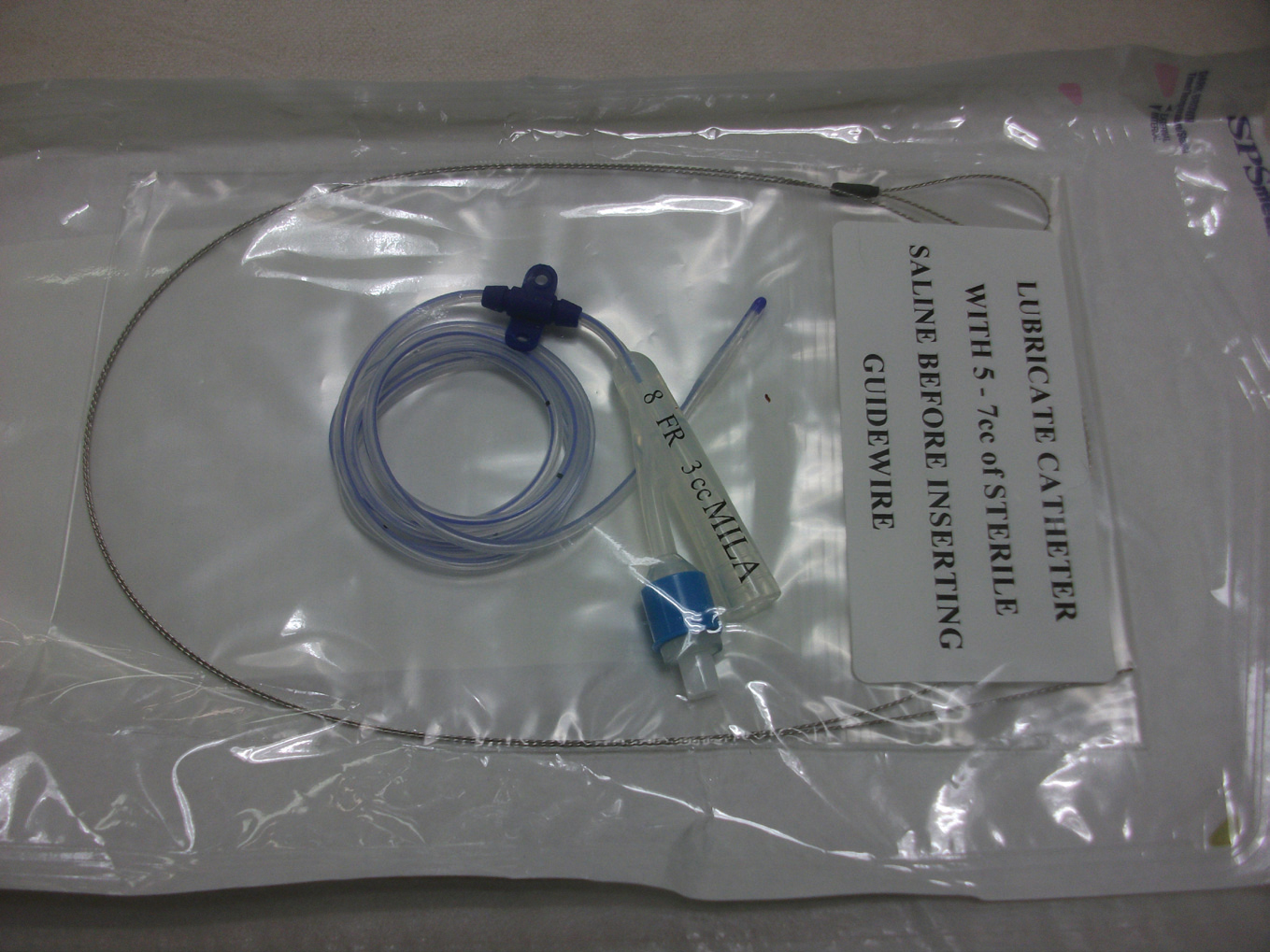
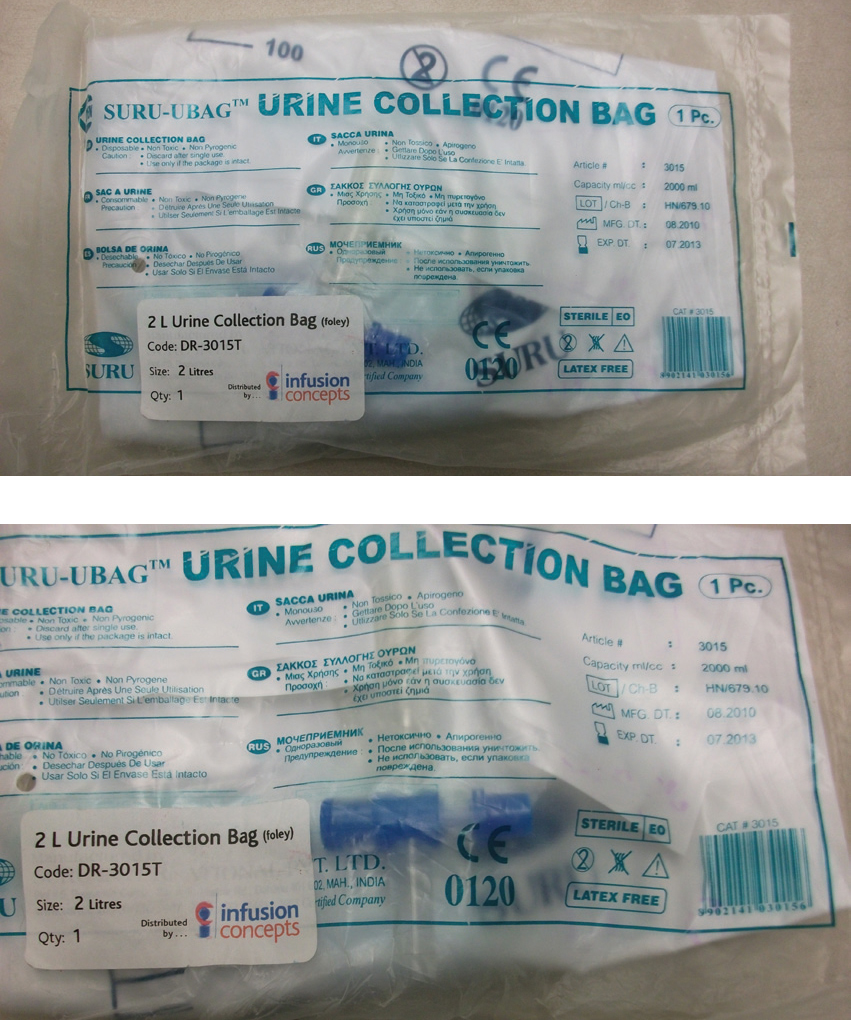
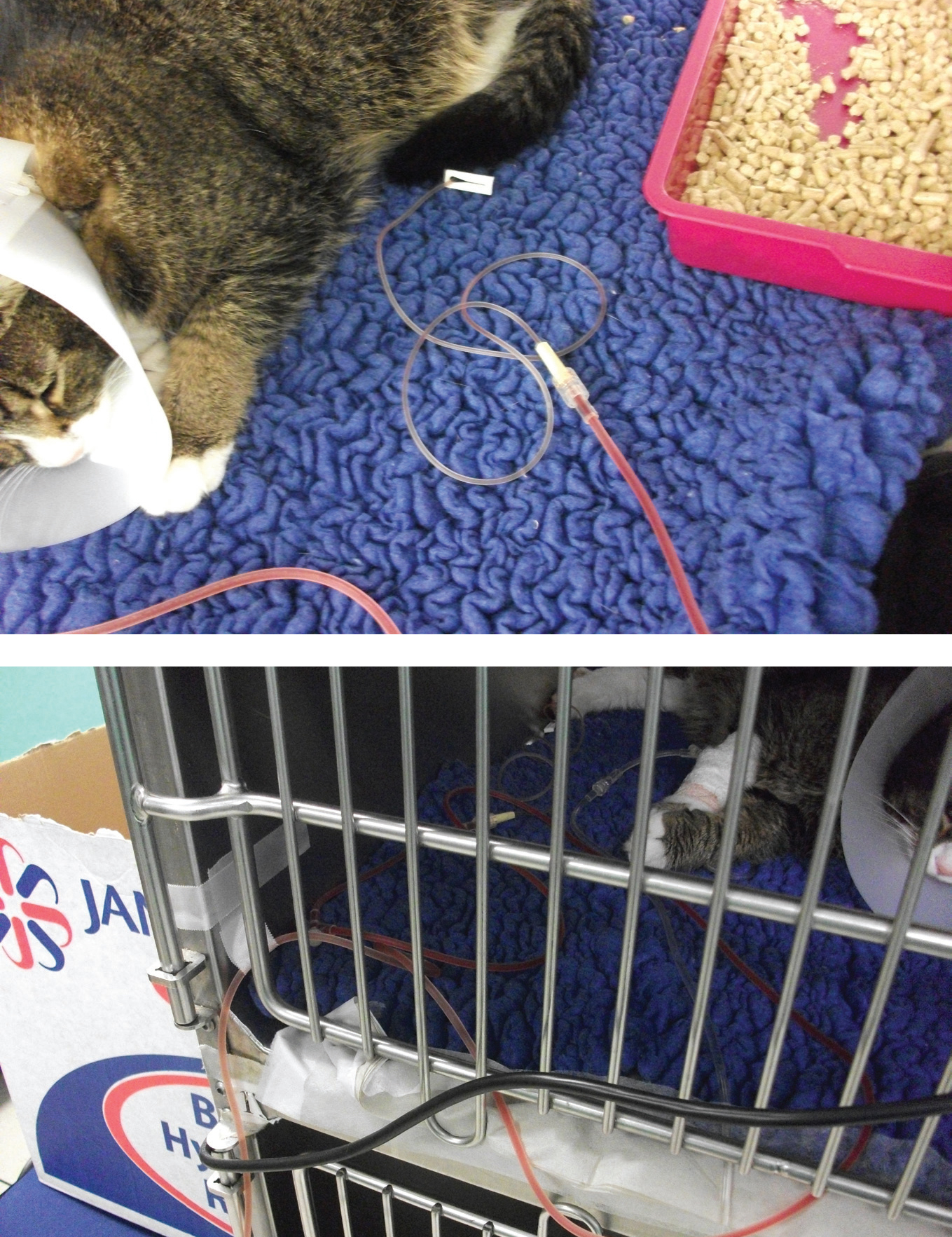
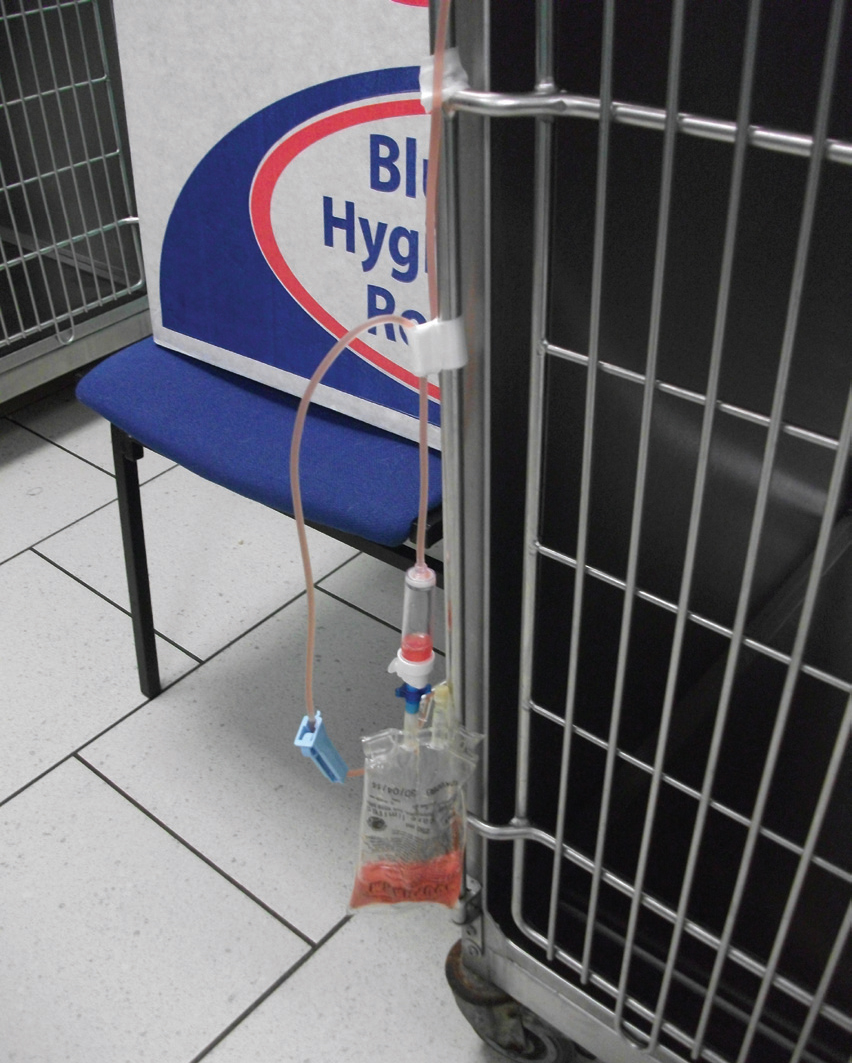
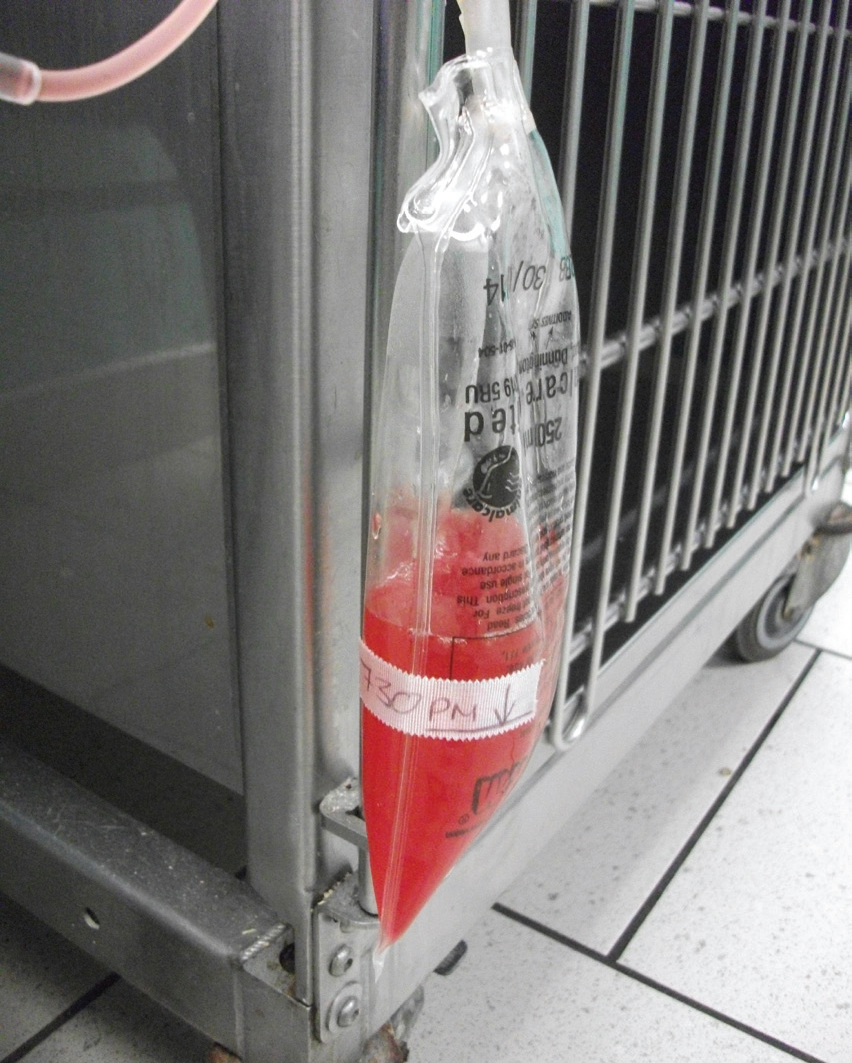
Prevention of UTIs
The final part of this article will consider some of the recommendations in the available literature regarding the prevention of CAUTIs in veterinary patients; it is worth noting at this point that all of the literature recommends the use of a CCDS with IDUCs, so this should be gold-standard practice protocol.
There is a need to move away from a habit-based approach to the management of IDUCs to a more evidence-based approach (Smith, 2003). Having reviewed literature Smith (2003) suggested that effective nursing of patients with IDUC involved: identifying patients who no longer need an IDUC; discussing appropriate alternatives to IDUCs; and providing education about IDUC management to the caregiver. Smith (2003) further suggested that catheter-associated problems could be avoided by: selecting and using an appropriate CCDS; securing the catheter properly; correctly positioning the drainage bag; following the manufacturer's recommendations regarding the inflation of balloons on Foley catheters; and avoiding routine catheter irrigation. A systematic review of available research conducted by Wilson et al (2009) concurred that education and CCDSs were key to preventing CAUTIs, adding that monitoring the incidence of CAUTIs, only catheterising when indicated, prompt removal of catheters and daily cleansing of the perineum were also appropriate management strategies. A later review and comparison of existing guidelines regarding the prevention of CAUTIs by Conway and Larson (2012) revealed consistent recommendations for human practice, and the main recommendations were limited use of IDUCs, aseptic insertion of catheters and the use and maintenance of CCDSs.
A systematic review of existing research relating to types of catheters and the development of CAUTIs, rather than the method of drainage and urine collection, discovered that silver-impregnated IDUCs significantly reduced the incidence of bacteriuria in humans catheterised for <1 week statistically, and for those catheterised for >1 week the incidence was still reduced although the results were no longer statistically significant (Schumm and Lam, 2008). They also compared antibiotic-impregnated catheters versus standard catheters and found that the antibiotic-impregnated ones lowered the rate of bacteriuria in patients catheterised for <1 week, but again the results were not statistically significant for those catheterised for >1 week. Therefore, silver-impregnated IDUCs used short-term, defined in most studies as <1 week, have proved effective in reducing the incidence of CAUTIs. This may be something the veterinary profession should look at researching more in the future as most veterinary patients only require short-term IDUCs.
Many of these interventions recommended to prevent the incidence of CAUTIs are supported in other available literature, which have been summarised in Table 1. The author recommends that veterinary professionals access the following human guidelines for further detailed information regarding the prevention of CAUTIs: the Infectious Disease Society of America (IDSA) guidelines for the diagnosis and treatment of asymptomatic bacteriuria in adults (Nicolle et al, 2005); the Healthcare Infection Control Practices Advisory Committee / Centers for Disease Control (HICPAC/CDC) Guidelines for the prevention of CAUTIs (Gould et al, 2009); and the IDSA Guidelines for the diagnosis, prevention and treatment of CAUTIs (Hooton et al, 2010).
Conclusion
It is clear from the available literature that CAUTIs are a significant problem in human patients, and thus should be a concern in veterinary patients. It is an area that has been subject to significant clinical research in human medicine, and to a lesser extent in veterinary medicine. All veterinary professionals must be aware of the pathogenesis of bacteriuria, especially associated with the used of indwelling devices. All of the human literature and guidelines regarding the prevention of CAUTIs advocate the use of CCDSs, with no significant differences noted in the incidence of bacteriuria between complex and simple CCDSs. Therefore all veterinary professionals should make the effort to attach a simple CCDS to the IDUC of every patient in their care in an effort to reduce the incidence of CAUTIs.
